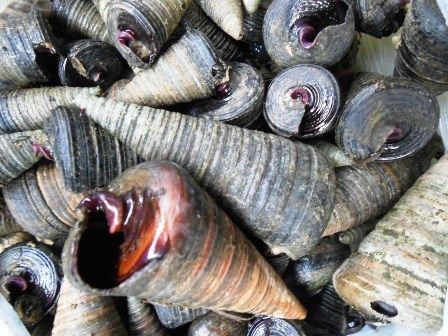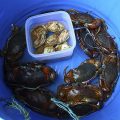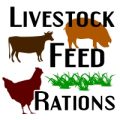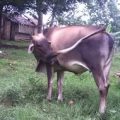Known for its sweet meat, mudcrab or ‘alimango’ has become the main ingredient in some of Philippine’s exquisite delicacies.
In the seafood market, underweight mudcrabs are being prohibited. They should be of good size in order to command better price. The bigger the mudcrab, the better is the profit. Thus, fattening is the key towards a profitable mudcrab production.
Conventional feeds for mudcrab include fish meal and trash fish, which are expensive due to their unavailability and high demand. Such is the motivation behind the recent study conducted by Renato Alber of the Camarines Norte State College. He looked into the possibility of formulating alternative feed source that could fatten mudcrabs without incurring additional expenses, an alternative feed ingredient that is as nutritious as fish meal and trash fish but cheap and readily available.
His search came to an end when he discovered the bagungon.
Bagungon, the telescope shell
It was in the mangrove areas of Camarines Norte that Alber, noticed the abundance of the bagungon- a large univalve snail with heavy and tall shell that resembles the shape of a little telescope. These telescope-looking shells feed on organic debris and are usually found on exposed mudflats where algae are also situated.
Bagungon is considered a pest in brackish water fishponds because it inhibits the growth of natural food and competes with the stock for food. Although edible and nutritious, bagungon is not preferred as food. They are merely used as extenders in feeding animals.
Fattening the mudcrabs
The telescope shells are rich in protein. To determine the effect of bagungon in fattening the mudcrabs, the study conducted feeding trials. A total of 150 pieces of mudcrab weighing 200 to 250 grams were fed with different formulations consisting mainly of bagungon meat and fishmeal. Five feed formulations were used for the study: 100% fishmeal; 100% bagungon meat; 75% bagungon meat + 25% fishmeal; 50% bagungon meat + 50% fishmeal and 25% bagungon meat + 75% fishmeal. The mudcrabs were fed twice a day, seven days a week.
To determine the effect of the different feed formulations on the mudcrabs, the researcher used five parameters: growth increment; survival rate; feed conversion ratio (FCR); feed conversion efficiency (FCE); and the return of investment.
Fat mudcrab means heavy profit
Results of the 20 day-fattening period showed that the highest gain in weight was achieved from those samples that were fed with 100% bagungon meat. These mudcrabs obtained the highest mean weight gain of 64.77 grams.
Following in weight gain are the mudcrabs that were fed with 75% bagungon meat + 25% fishmeal, weighing 63.33 grams. Mudcrabs fed with fishmeal alone weighed 62.47 grams only. The lowest weight comes from those mudcrabs fed with 50% bagungon meat and 50% fishmeals, which weighed 57.20 grams.
In terms of the survival rate, all the mudcrabs survived under any of the five treatments. No significant differences were observed in the FCR and FCE of bagungon and fishmeal.
In terms of nutrient composition, fishmeal has better crude protein content than the bagungon meat but combining it with fishmeal could improve the feeds. This means that the bagungon meat could be better substitute for fishmeal up to 100% without significant difference in weight.
Meanwhile, given the good performance of the bagungon meat over fishmeal, cost and return analysis showed that it’s the best cheap alternative. Moreover, its abundance makes it a readily available feed source.
Growing mudcrab is a lucrative business. And like any other seafood business, growers must abide by the standard of what is “marketable” and what is not, otherwise, everything goes to waste. Now, with the bagungon, fattening mudcrab becomes easy and cheap.
————————————-
Source:
“Growth and Survival of Mudcrab (Scylla serrata) Fed with Bagungon Meat (Telescopium telescopium) as Alternative Feed Ingredient in Mudcrab Fattening” by Renato B. Alber, Camarines Norte State College, Daet Camarines Norte. This paper was presented during the recently held 15th National Research Symposium held at the BSWM Convention Hall, on 8 October 2003.
By: Rita T. De la Cruz, BAR Digest, October-December 2003 Issue (Vol. 5 No. 4)








if you are looking for a comprehensive list of properties for sale or for rent in the most secure and simplest way possible, feel free to visit here #flatxph
looking for a 1 hectare farm in Laguna-Quezon area